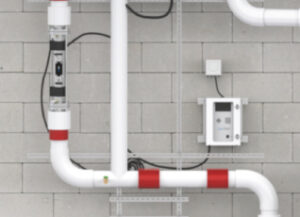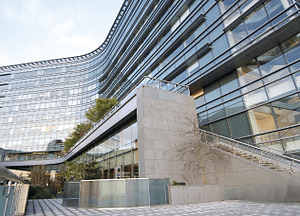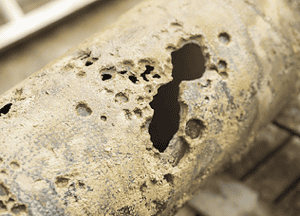Building water systems can create perfect conditions for Legionella and other waterborne pathogens to multiply and cause disease. Some factors in building water systems contributing to Legionella and pathogen growth include water stagnation, lack of disinfectant, water temperatures, and sediment.
A water management program works to pinpoint potential hazards within the water system, so controls can be put in place to prevent pathogens from growing and spreading.
Water management programs are now an industry standard for many buildings in the United States and are necessary to comply with various regulatory agencies, including The Joint Commission, ASHRAE Standard 188, Centers for Medicare & Medicaid Services, CDC, Veteran Affairs, Department of Defense, and others.
Steps of a water management program
Developing and maintaining a water management program is a multi-step process that requires continuous review and examination. Several components or steps are necessary to create a well-rounded water management program.
- Establish a water management program team that includes ASSE 12080-Certified Legionella Water Safety and Management Specialists.
- Evaluate the building’s water system and create text and diagram descriptions for clarity.
- Identify potential areas where Legionella and other waterborne pathogens could grow.
- Decide where control measures should be applied and how to monitor them.
- Establish ways to intervene when control limits are not met.
- Verify that the program is working and is effective.
- Document all actions, evaluation results, and interventions.
Elements of successful water management programs
The key elements of a successful water management program include:
- Water temperatures are kept outside the range needed to foster Legionella growth.
- Processes are implemented to prevent water stagnation.
- Adequate disinfection methods are used.
- Actions are taken to prevent corrosion, sediment, biofilm, and scale buildup – all of which encourage Legionella and other waterborne pathogens to grow.
Customizing water management programs for each building
Water management programs should be tailored to your unique building(s). Factors to consider include:
- Layout, size, and age of the building(s).
- Location of the building(s) and surrounding conditions.
- Areas within the building(s) that may be ideal for Legionella and waterborne pathogen growth.
- If occupants are at increased risk for Legionnaires’ disease.
- The organization’s overall water quality and safety goals.
For some facilities, like hospitals, hotels, and other large facilities with complex water systems, a water management program should be developed for the entire building. For smaller buildings with simple water systems, a water management program may only be necessary for specific areas or equipment, like cooling towers or decorative fountains.
No two water management programs are the same, and your organization’s unique goals, needs, and buildings must play a role in how the water management program is developed and implemented.
Partnering with an experienced water management company like LiquiTech can simplify the process of developing and implementing a compliant water management program. Learn more about LiquiTech’s water management programs.


